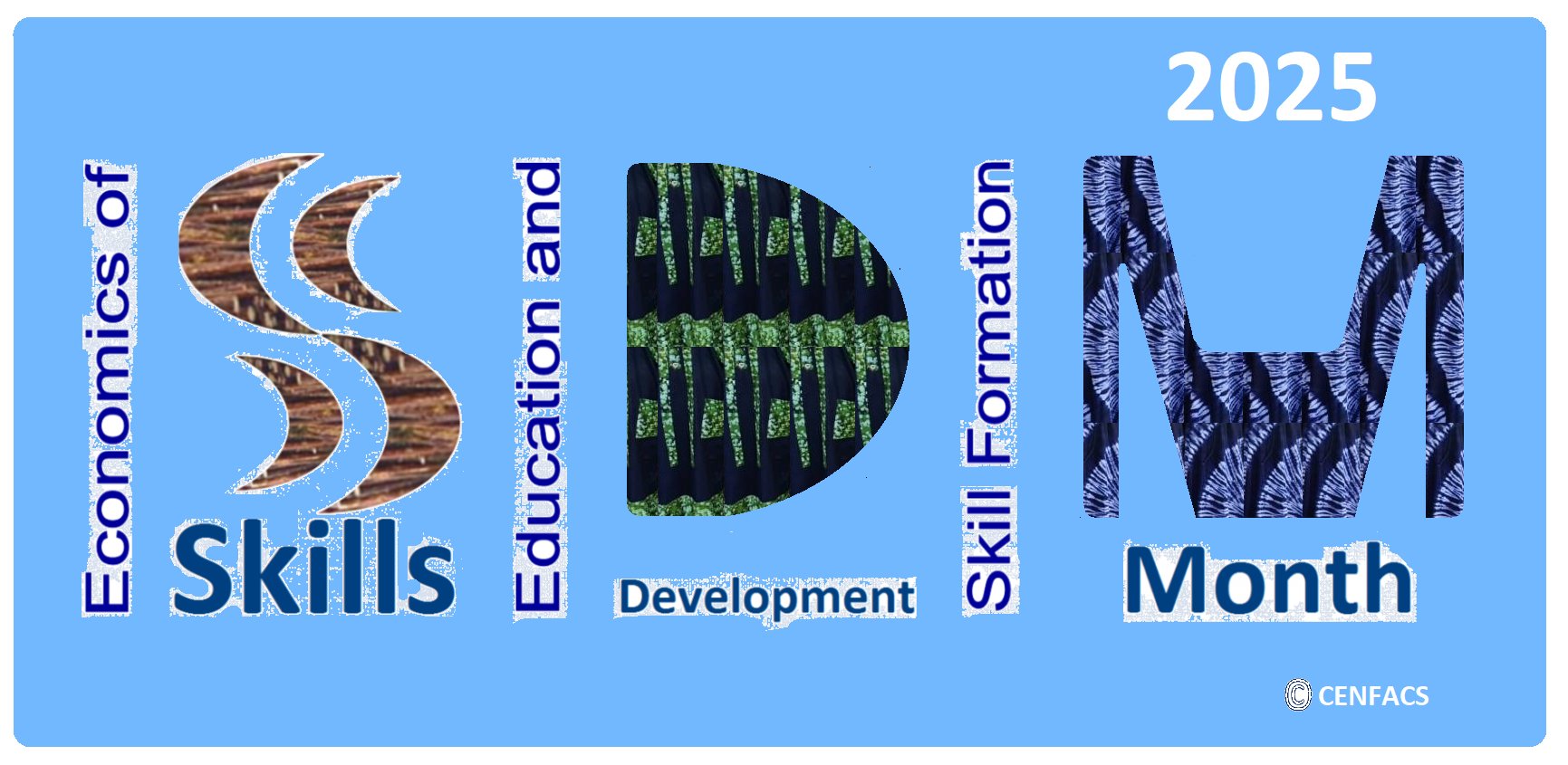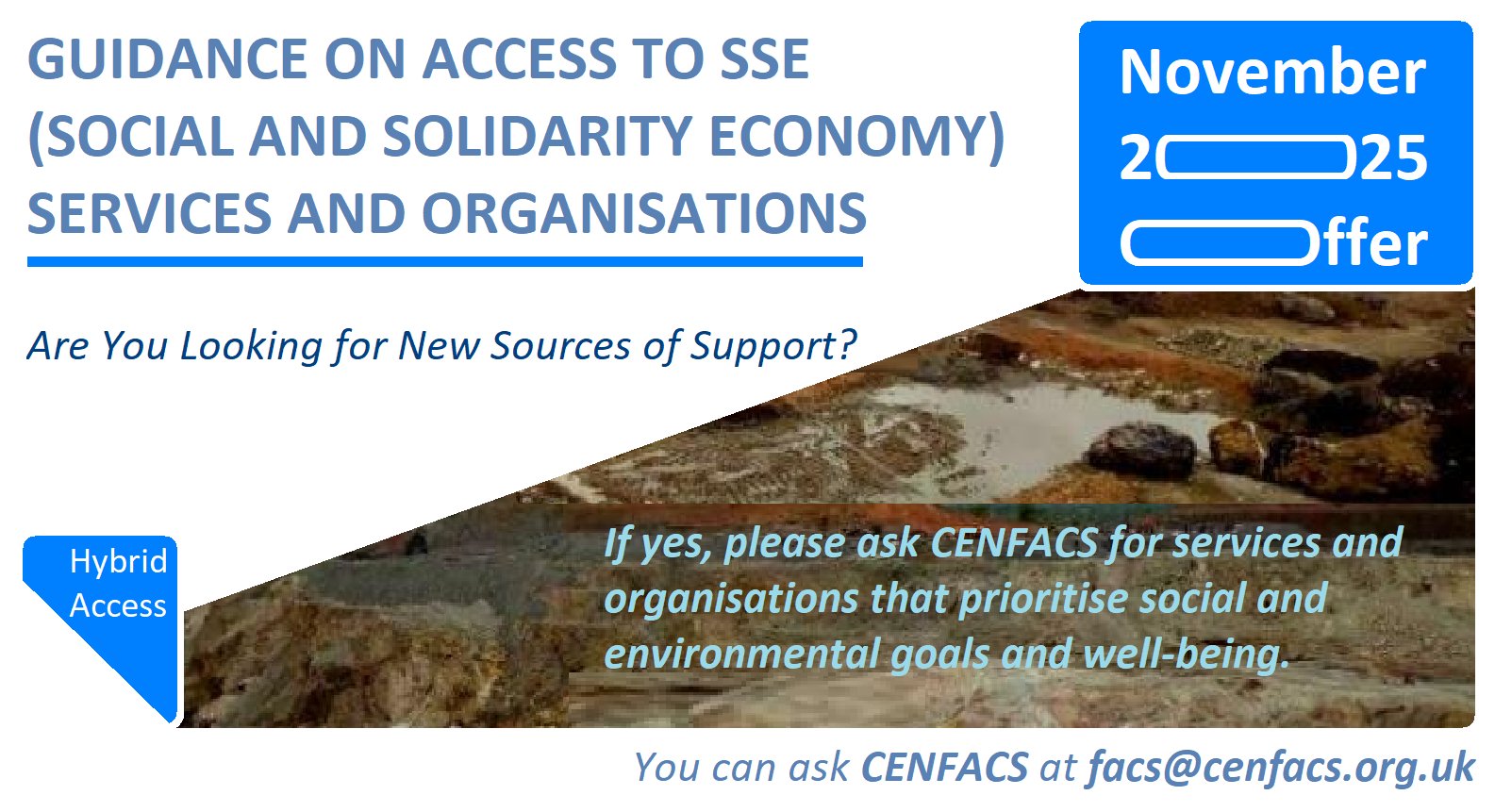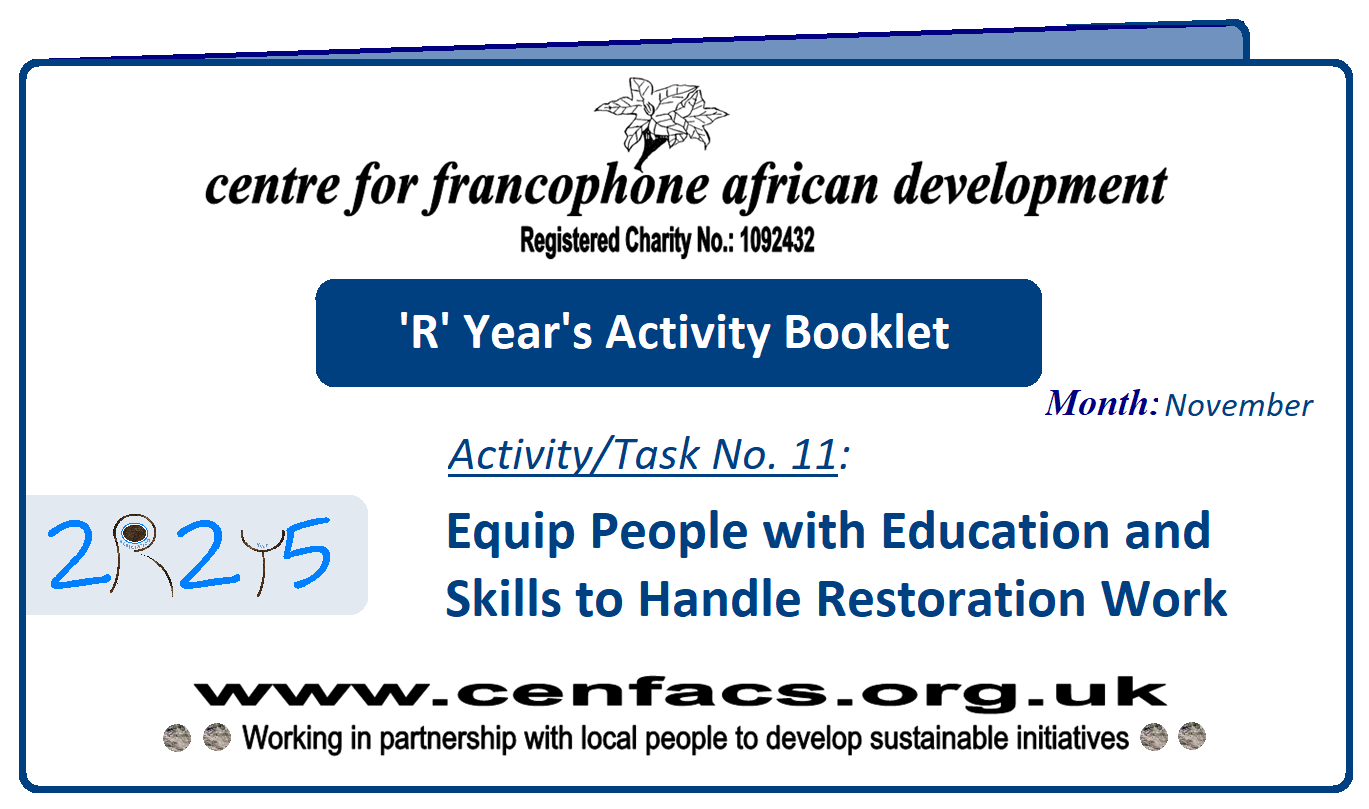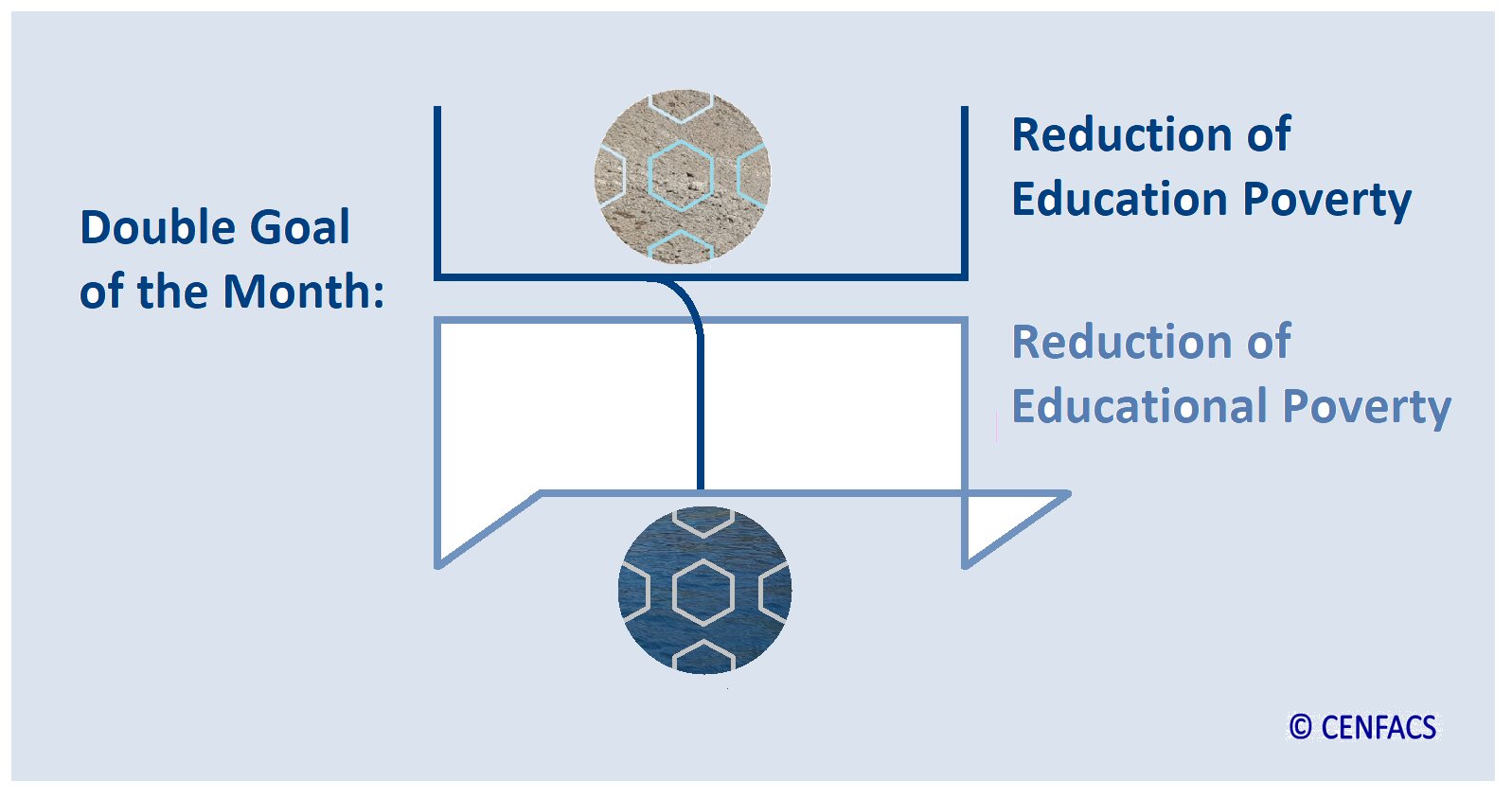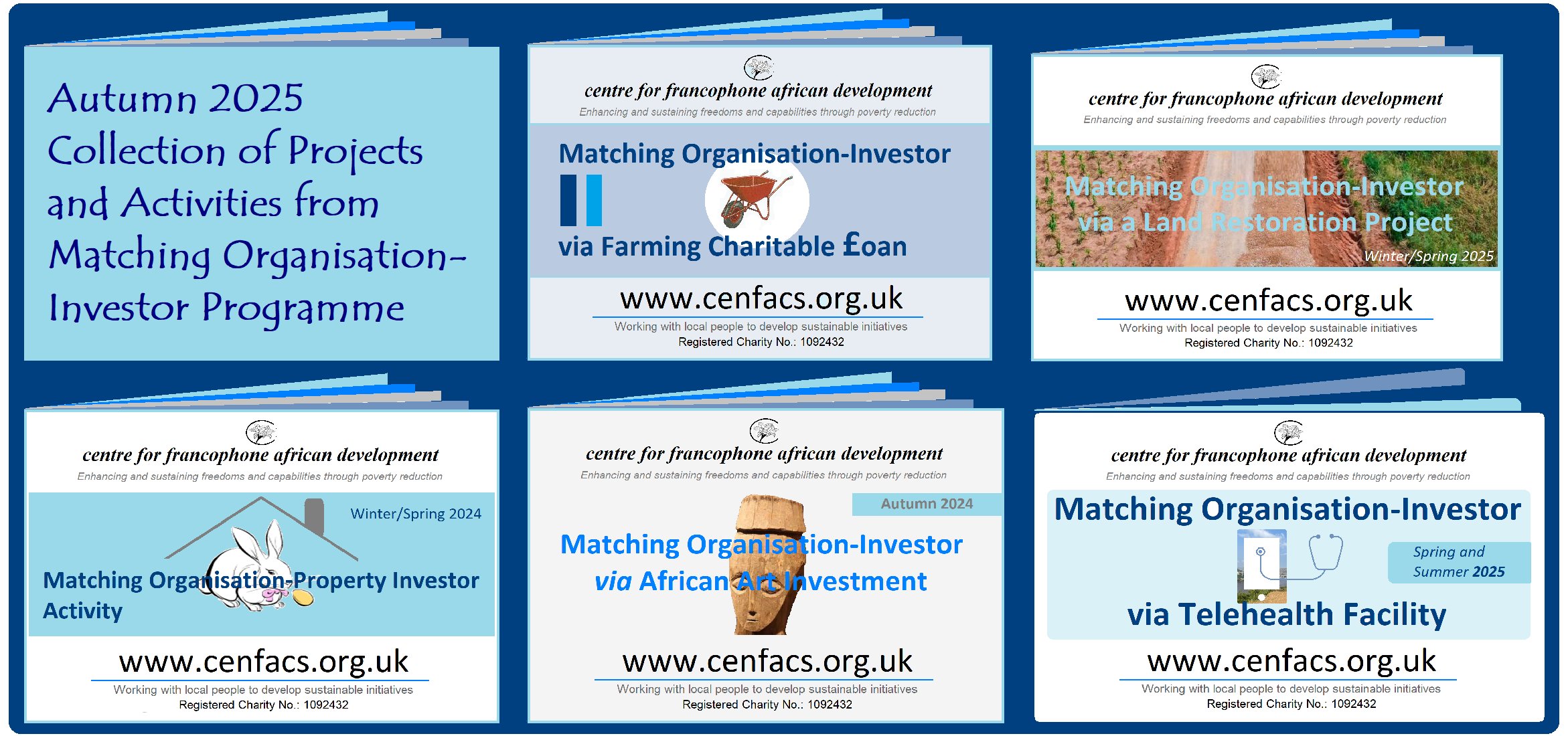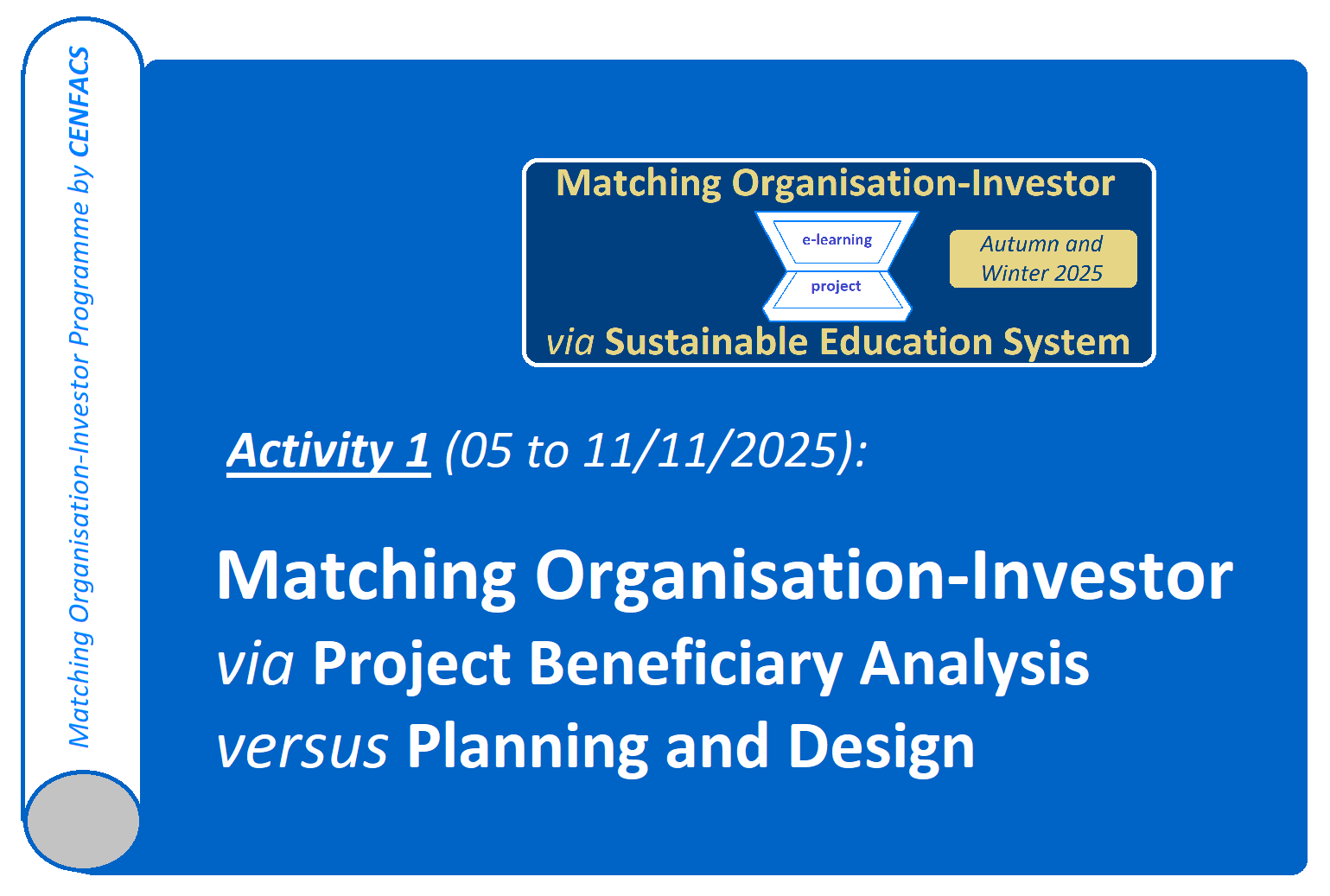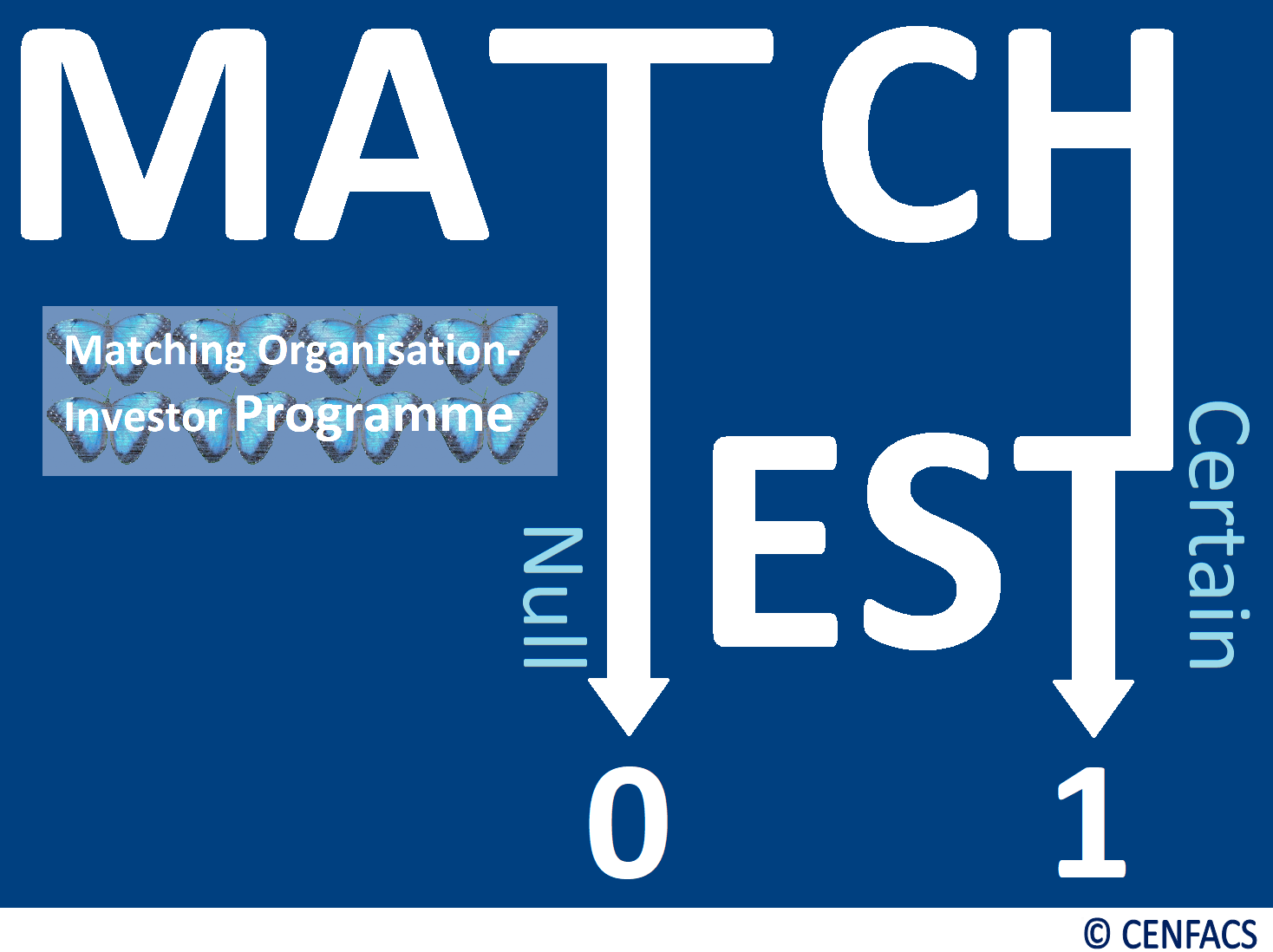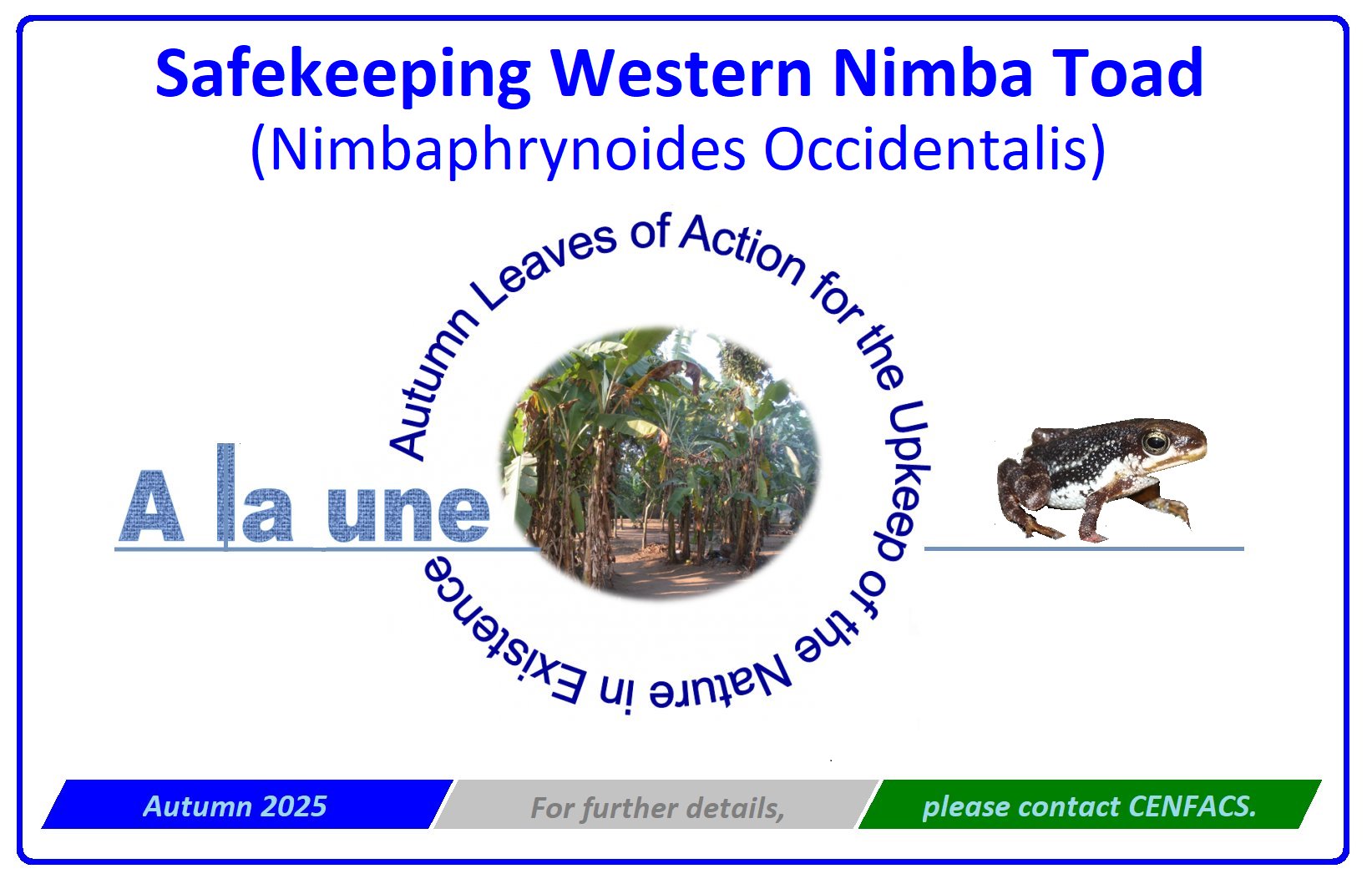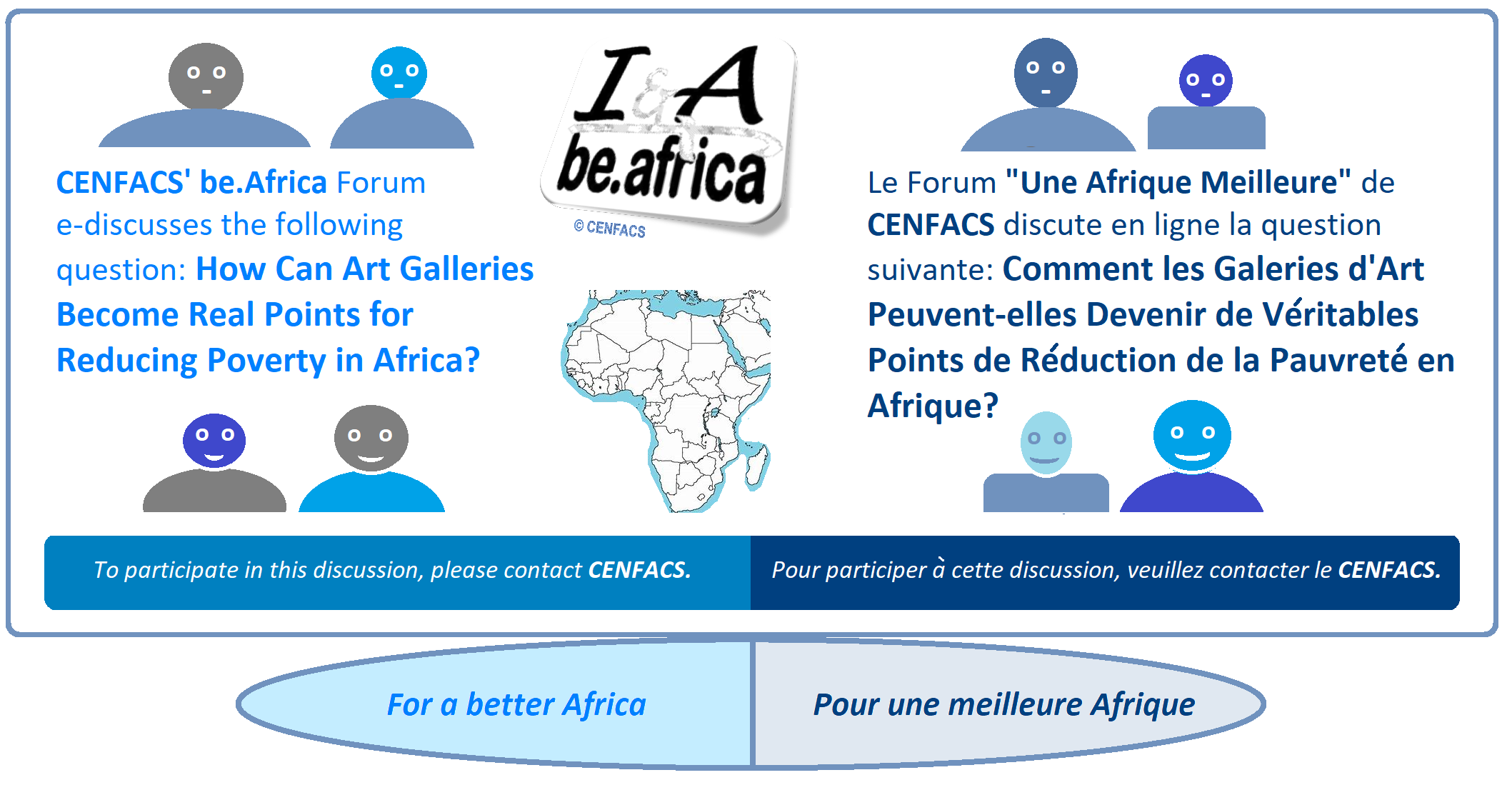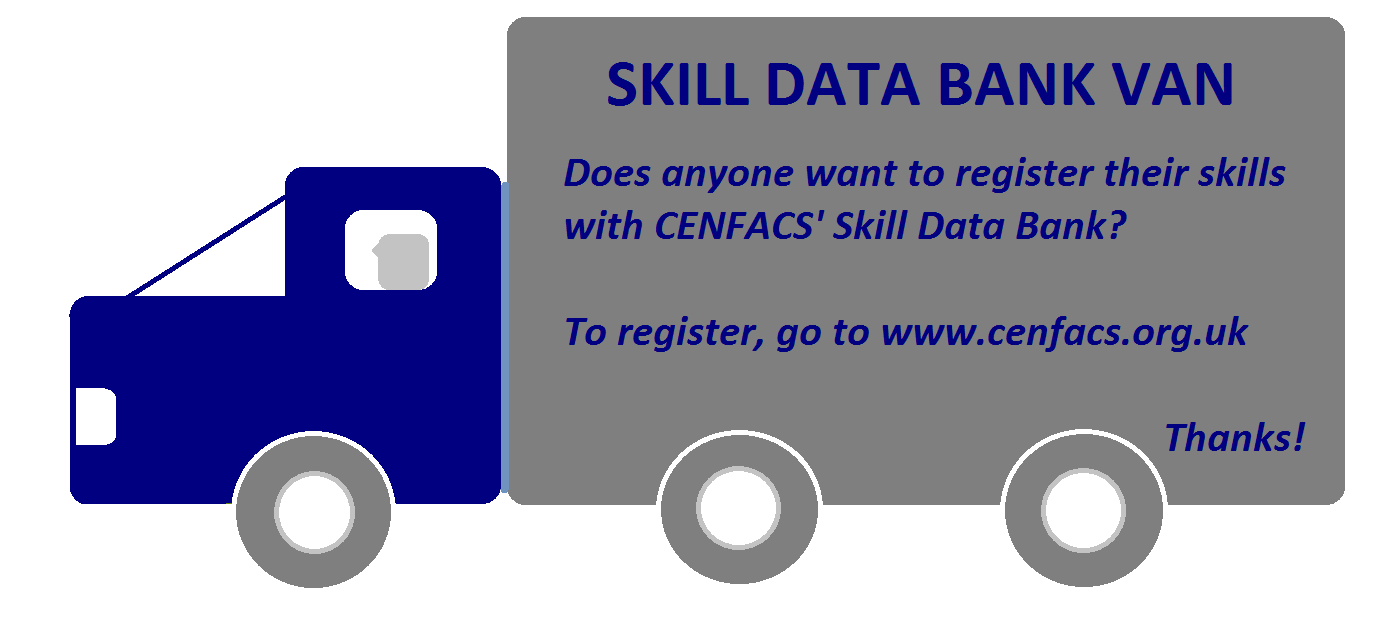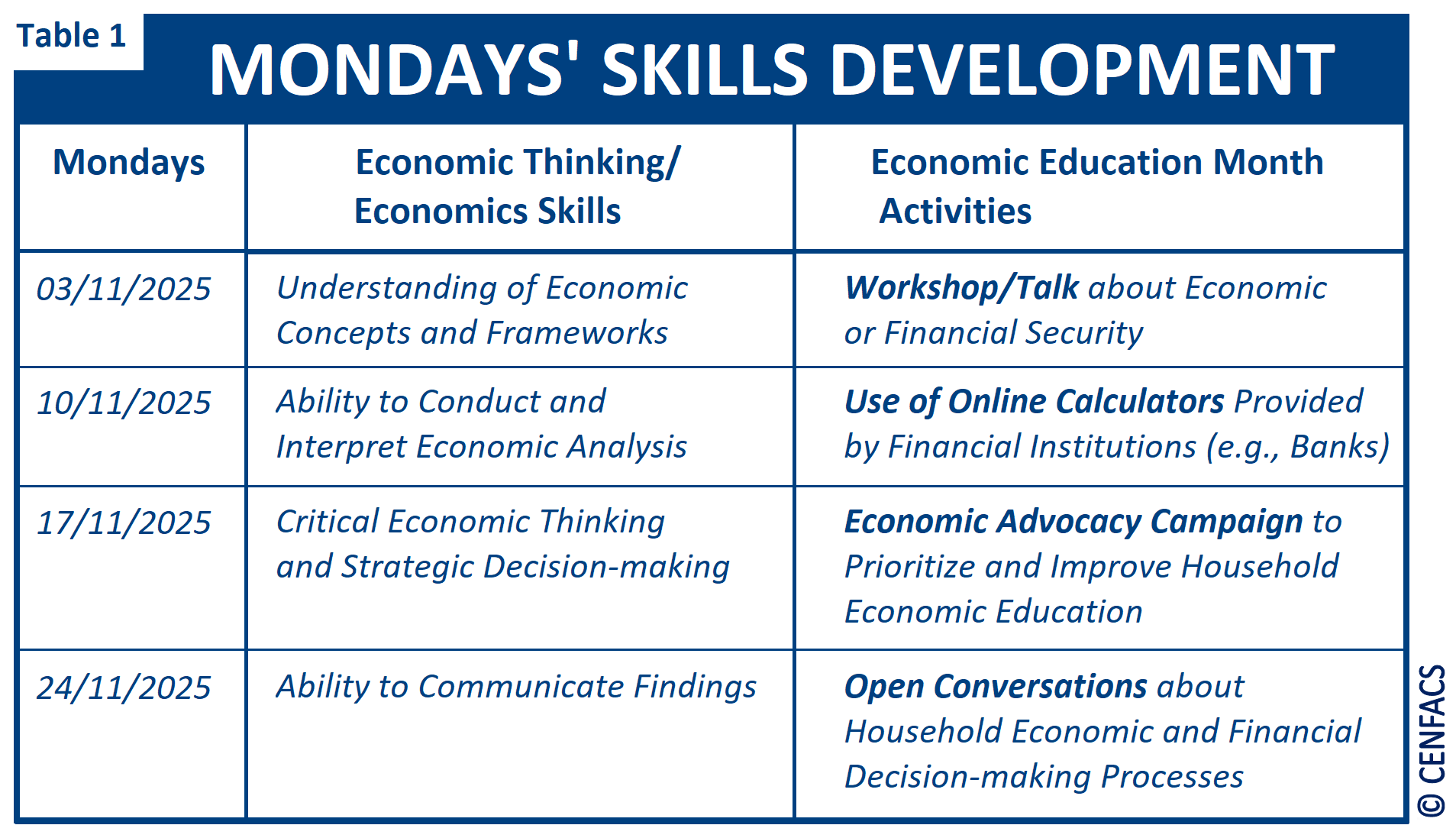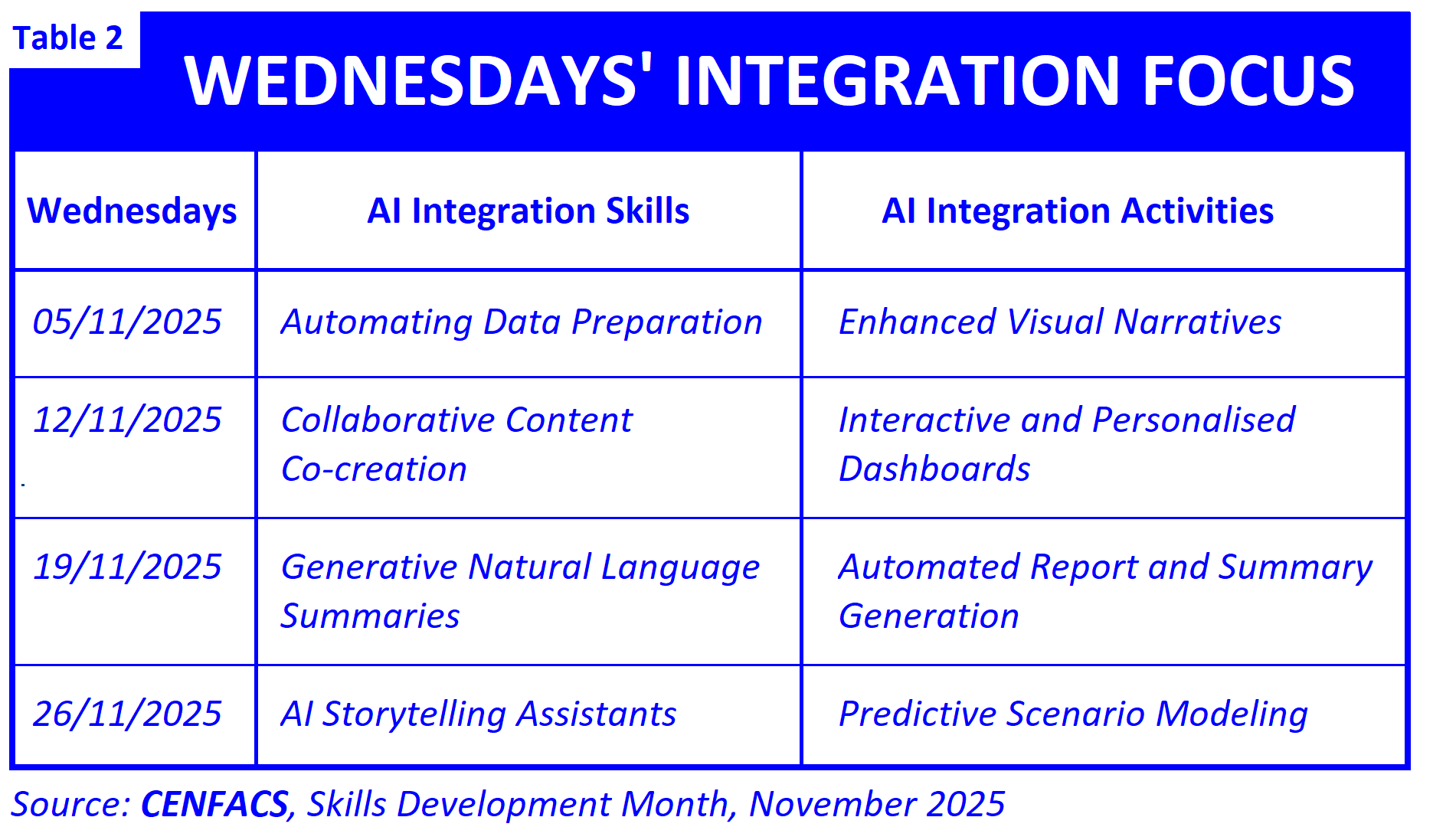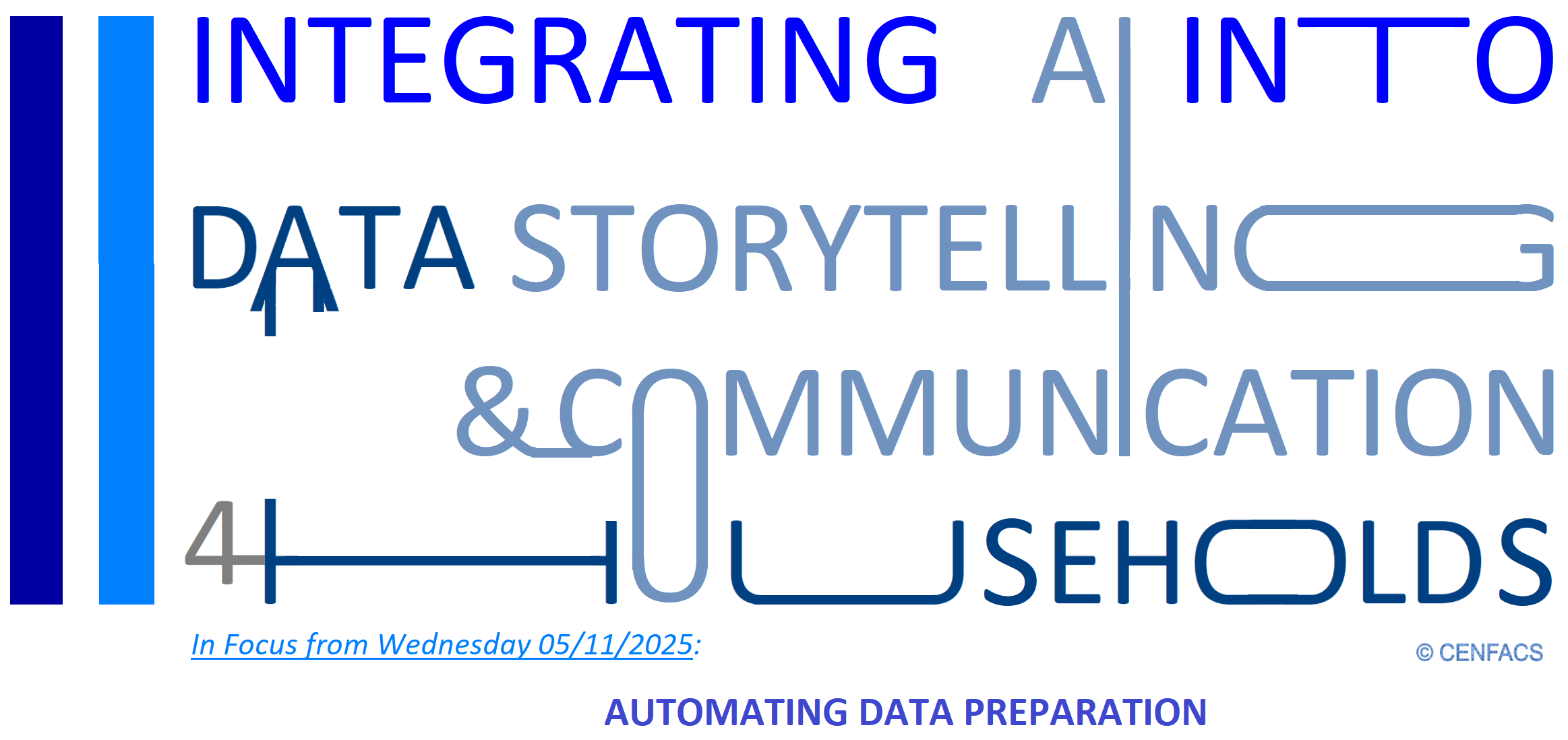Welcome to CENFACS’ Online Diary!
05 November 2025
Post No. 429
The Week’s Contents
• The Month of the Economics of Education and Skill Formation (Skills Development Month) 2025
• Activity/Task 11 of the Restoration (‘R’) Year and Project: Equip People with Education and Skills to Handle Restoration Work
• Double Goal of the Month: Reduction of Educational and Education Poverty
… And much more!
Key Messages
• The Month of the Economics of Education and Skill Formation (Skills Development Month) 2025
November is the Month of the Economics of Education and Skill Formation (in short Skills Development Month) within CENFACS. It is the month that we recognise the economic value of education as well as of the non-economic benefits from education even though there could be a dispute about these values or benefits. It is also the month during which we pay a particular attention to the technology of skill formation; month during which we try to find out how skills are formed and how technologies relating to them can help us to further reduce poverty and enhance sustainable development.
So, our November work on economic issues relating to education has started. This work will first be about the link between education economics and poverty reduction, then between education economics and sustainable development. This work will include the identification of causal relationships between African organisations’ work and outcomes in educational projects in 2025 and beyond.
In this identification, we shall refer to the human capital theory, which will be the theoretical and working paradigm to be used this month. In other words, all along this month we shall work on this assumption: the importance and capacity of education and training (skills development) to help reduce poverty and enhance sustainable development.
Skills formation and development will be about forming new skills (that is, any abilities to perform an activity in a competent way) to continue to fight poverty; for example poverty induced by the cost-of-living crisis or any other crisis. This month, Skills formation and development will include four types of skills:
a) Economic Thinking or Economics Skills
b) Skills to Integrate Generative AI into Household Data Storytelling and Communication
c) Green Industry Skills
d) Restoration Skills to Handle a Crisis with No End in Sight.
Let us briefly highlight these skills.
σ Economic Thinking Skills or Economics Skills
Economic thinking is a skill that involves understanding and interpreting the world around us through the lens of economics or economists. It is not just about money or business but about how people, institutions, and societies make decisions about scarce resources. Economic thinking helps us make rational, informed decisions about resource allocation and encourages critical thinking. It is essential in everyday life , as it aids in making decisions that maximize satisfaction or utility, understanding the world around us, and developing critical thinking skills.
As ‘econedmonth.org’ (1) puts it,
“Economics affects all of our lives. It teaches us to think logically, use data smartly, and develop strong analytical and problem-solving skills. It helps explain choices as small as your personal day-to-day decisions and as large as foreign policy decisions”.
During this Month of the Economics of Education and Skill Formation, we shall look in detail economic thinking as our core skill of the month.
σ Skills to Integrate Generative AI into Household Data Storytelling and Communication
Integrating Generative AI (Artificial Intelligence) into Household Data Storytelling and Communication is one of CENFACS’ Autumn 2025 Starting XI Poverty Reduction Projects. It is about how households can use generative AI to enhance aspects or various stages of their data storytelling and how household members as human storytellers can stay at the centre of the process of integrating generative AI into their data storytelling and communication.
This integration is important as data are deeply embedded in households. Households need appropriate communications and storytelling skills about data to properly express by themselves what is behind data. To better communicate the story behind their data, households do not need to be data scientists but they can require assistance from or the collaboration of AI.
The initiative, which will use generative AI to interpret and communicate data, will aim at empowering user households with skills to tell and visualise data (i.e., words and numbers) as well as get explained information that run their life. It will help them to have control over their data and life while keeping pace with the evolution of data storytelling and communication technologies.
σ Green Industry Skills
The October History Month has gone, but our work on green industry continues with green industry skills. The latter are the knowledge, abilities, and values needed to create and support a more sustainable, low-carbon and resource-efficient society. These skills range from technical expertise in areas like renewable energy and green building to softer capabilities such as critical thinking, problem-solving, and environmental awareness. They are vital for adopting new poverty reduction solutions or models.
During this November 2025, we shall work on these green industry skills.
σ Restoration Skills to Handle a Crisis with No End in Sight
Restoration Skills to Handle a Crisis with No End in Sight, which will make up our Development Day 0n 19 November 2025, will be those that people can learn and develop in order to freshly start or manage Autumn 2025.
This year, our Development Day will still be about skills that can be learnt and developed in order to freshly start Autumn 2025. It will be about Women, Children and Restoration Skills for Handling a Crisis with No End in Sight.
A crisis with no end in sight refers to a dire situation where help, support, or a solution is not available or forthcoming. It describes a severe, ongoing situation where the path to resolution is unclear or obstructed.
Examples of this type of crisis include the following:
σ Humanitarian crisis in the Great Lakes of Africa, particularly in the eastern part of the Democratic Republic of Congo where the victims receive inadequate aid and where international aid was cut;
σ Protracted conflicts (like in Sudan) and the long-term effects of recurring natural disasters (like drought in East Africa)
σ A severe situation where there is insufficient international funding or media attention causing people to more suffer in the shadow
Etc.
These types of crises or “no end in sight” crises highlight a state of prolonged emergency that lacks a visible resolution and often involves systemic failures, complex challenges or ongoing conflicts. They can be handled by Restoration Skills.
Restoration Skills will include technical abilities for physical restoration, interpersonal skills, and cognitive and emotional skills. In the last five years, the Development Day has been designed to resonate with the November month of Skills Development within CENFACS. This year’s Development Day will too reverberate with the Skills Development Month within CENFACS.
This above-mentioned variety of abilities or skills will make our human capital this month.
Under the Main Development section of this post, you will find further information about this first key message.
• Activity/Task 11 of the Restoration (‘R’) Year and Project: Equip People with Education and Skills to Handle Restoration Work
Our Restoration (‘R’) Year and Project have progressed to Activity/Task 11, which is ‘Equip People with Education and Skills to Handle Restoration Work’. To undertake this task, let us explain these two ways of equipping people to handle restoration work.
• • Equipping People with Education to Handle Restoration Work
Education can foster skills and knowledge that are essential for ecological restoration efforts, such as sustainable land use practices and biodiversity conservation.
For instance, CENFACS’ Restoration Project can serve as educational opportunity for those who would like to have hands-on experience on the educational skills involved in restoration work, and to engage with the community. So, CENFACS‘ current Restoration Project helps educate about sustainable issues and practices as well as the importance of environmental stewardship.
• • Equipping People with Skills to Handle Restoration Work
Skills Development can ensure that for people to handle restoration challenges, they need to have the appropriate skills, techniques, technologies and knowledge. They need to have technical abilities to manage restoration tools, understanding of science, problem-solving skills, effective communication, and knowledge.
So, continuous training and development as well as enhancing skills are essential in the restoration of life and things.
• • Supporting This Activity/Task
Those who would like to proceed with this activity/task by themselves can go ahead.
Those who would to be part of a working group helping in the realisation of this activity/task can let CENFACS know.
The above is what Activity/Task 11 of the Restoration (R) Year/Project is about. Those who would like to undertake it, they can go ahead.
For those who need some help before embarking on this activity/task, they can speak to CENFACS. To speak to CENFACS, they are required to plan in advance or prepare themselves regarding the issues they would like to raise.
For any other queries and enquiries about the ‘R‘ project and this year’s dedication, please contact CENFACS as well.
• Double Goal of the Month: Reduction of Educational and Education Poverty
Our goal of November 2025 is double, that is the reduction of educational poverty and the reduction of education. To understand this double goal, let us explain the two types of poverty.
• • What Is Educational Poverty?
Educational poverty is defined by ‘andreabocellifoundation.org’ (2) as
“A condition in which children and adolescents are deprived of essential opportunities to learn, explore the world, develop their potential, and shape their future with autonomy and awareness”.
The website ‘andreabocellifoundation.org’ adds that
“Educational poverty extends beyond poor academic attainment. It is a multidimensional phenomenon, shaped by family, economic, and social factors, and encompasses both cognitive and non-cognitive skills, including emotional and relational competencies”.
This condition is found in many poor families and households; condition that can be linked to a a particular situation which is education poverty.
• • What Is Education Poverty?
It can be understood as a situation where individuals, particularly children, are unable to access or benefit from quality education due to various barriers, primarily stemming from poverty. This includes not only the absence of formal education but also the inability to achieve basic literacy and numeracy skills, which are essential for personal and professional development.
Both educational and education poverty can be tackled. Before looking at ways of tackling them, let us emphasise the difference between the two.
• • The Difference between Educational Poverty and Education Poverty
Within the education literature, it is stated that education poverty is a broader term that refers to the deprivation of educational opportunities, while educational poverty is the state of being in a cycle where poverty prevents a person from accessing education. While related, the former is a lack of education outcome, and the latter is a cause of the lack of education.
In short, education poverty is the consequence (lack of education outcomes), while educational poverty is one of the key causes (poverty acting as a barrier to education).
• • Reduction of Educational Poverty and Education Poverty
Reducing or ending educational poverty requires a multifaceted approach that includes elements such as targeted school funding and resources, social and economic reforms, strengthening social protection systems, using technologies, etc.
Similarly, to combat education poverty, it is essential to invest in educational infrastructure, provide financial support for families, and ensure that all children have access to quality education.
The above ways of reducing the two types of poverty are just the few ones among the many. The key takeaway here is it is possible to tackle education poverty as a consequence and educational poverty as a cause.
• • Implications for Selecting the Goal for the Month
After selecting the goal for the month, we focus our efforts and mind set on the selected goal by making sure that in our real life we apply it. We also expect our supporters to go for the goal of the month by working on the same goal and by supporting those who may be suffering from the type of poverty linked to the goal for the month we are talking about during the given month (e.g., November 2025).
For further details on the goal of the month, its selection procedure including its support and how one can go for it, please contact CENFACS.
Extra Messages
• Autumn Matching Organisation-Investor via Sustainable Educational System (SES) Project – Activity 2 (05 to 11/11/2025): Matching Organisation-Impact Investor via Project Beneficiary Analysis versus Planning and Design
• “A la une” (Autumn Leaves of Action for the Upkeep of the Nature in Existence) Campaign – In Focus for Week Beginning Monday 03/11/2025: Safekeeping Western Nimba Toad (Nimbaphrynoides Occidentalis)
• E-discussion on the Embedment of Economic Activities in Social, Cultural, and Ecological Contexts
• Autumn Matching Organisation-Investor via Sustainable Educational System (SES) Project – Activity 2 (05 to 11/11/2025): Matching Organisation-Impact Investor via Project Beneficiary Analysis versus Planning and Design
The second activity or episode of our 5-week Autumn Matching Organisation-Investor via Sustainable Educational System (SES) Project is about Matching Organisation-Impact Investor via Project Beneficiary Analysis versus Planning and Design.
Both Africa-based Sister Charitable Organisation (ASCO) and not-for-profit (n-f-p) impact investor have decided to move forward with the matching talks as they scored points each of them during Activity 1. They agreed to move to Activity 2 of the matching process while finalising the little bits remaining from Activity 1 of the matching negotiations.
To summarise what is going to happen at the level of this Activity 2, we have organised our notes around the following headings:
σ Activity 2 Matching Concepts
σ Africa-based Sister Charitable Organisation’s Project Beneficiary Analysis (PBA)
σ Not-for-profit Investor’s Project Planning and Design (PPD)
σ The Match or Fit Test.
Let us look at each of these headings.
• • Activity 2 Matching Concepts
There are three concepts making this Activity 2. The first concept is beneficiary analysis and is part of ASCO’s e-learning business plan. The second and third concepts are project planning and design, which are one of the essential stages of SES Project lifecycle from N-f-p Impact Investor’s perspective.
Let us explain these concepts.
• • • Project beneficiary analysis
Project beneficiary analysis is a systematic approach identifying and evaluating the individuals or groups who will benefit from a project, ensuring that their needs and perspectives are integrated into project planning and implementation. It involves assessing the value of a project as perceived by its intended beneficiaries.
This qualitative research tool aims to gather insights from those who are directly or indirectly affected by the project, allowing project managers to understand the impact of their interventions better. The analysis helps in designing, monitoring, and evaluating projects by ensuring that the voices of beneficiaries are heard and prioritized.
Key components of project beneficiary analysis include the identification of beneficiaries, qualitative research methods, impact assessment, and integration of the findings from beneficiary analysis into project design.
• • • Project planning
The definition of project planning retained here comes from ‘knowledgehut.com’ (3) which argues that
“Project planning or project management planning is the foundation and most important stage of the project management life-cycle. The project planning activity sets the project foundations by base-lining the project scope, schedule, quality standards, objectives, and goals. Planning typically involves creating a document with all project information that comprises the respective tasks, assignee’s roles, and areas of responsibility”.
ASCO needs to have a document highlighting the different components of its project plan.
• • • Project design
Project design can defined in many ways. One way of defining it comes from ‘asana.com’ (4) which argues that
“Project design is an early phase of the project lifecycle where ideas, processes, resources, and deliverables are planned out. A project design comes before a project plan, as it is a broad overview whereas a project plan includes more detailed information”.
In the negotiations, ASCO needs to demonstrate that it has properly designed its project and planned its ideas, processes, resources and deliverables about the SES Project.
• • • Africa-based Sister Charitable Organisation’s Project Beneficiary Analysis (PBA)
Eva Wieners (5), explains that
“Helping beneficiaries is the number one reason donors are willing to give money”.
Because of that, ASCO needs to thoroughly analyse beneficiaries. As part of the project beneficiary analysis, ASCO can disperse information about beneficiaries throughout the entire SES proposal. it should directly specify the target group of the educationally needy that the SES Project will help. Its analysis will indicate the number of project beneficiaries to the n-f-p impact investor, specify the difference between indirect (e.g., educational institutions like schools, colleges and universities) and direct beneficiaries (such as pupils and students). However, it must ensure that these beneficiaries are living people, even if it includes indirect beneficiaries like educational institutions.
The reading that the n-f-p impact investor can have on ASCO’s Project Beneficiary Analysis may differ or not.
For instance, the n-f-p impact investor may want to know the following:
σ If ASCO has conducted cost-benefit analysis in its beneficiary analysis;
σ Which segments of the African society will benefit from the project (that is, the people whose circumstances ASCO wants to change by implementing its idea of SES);
σ If ASCO will use beneficiary assessment (which is a qualitative social assessment method of investigation and evaluation consisting of data collection techniques);
Etc.
ASCO should bring some clarity regarding the above-mentioned issues if it wants these negotiations to progress to the next phase.
• • • Not-for-profit Investor’s Project Planning and Design (PPD)
The n-f-p impact investor will refer to its understanding of project planning in accordance to a sustainable educational project’s life cycle. From this perspective, the n-f-p impact investor’s role will be to ensure that the project’s design incorporates sustainability and long-term value for all stakeholders. He/she will also check that the project focus will be on green and cost-effective design that minimises long-term operations and maintenance costs and maximises durability and efficiency. Still from the same perspective, the key activities will be to integrate sustainable practices into the educational model and the physical infrastructure, the use of life cycle assessments for material and design choices, and the plan for project management, including risk management and communication.
With the above-mentioned elements (that is, investor’s role, project focus and key activities), the n-f-p impact investor would like to check ASCO’s project plan to find out if ASCO has
defined stakeholders, clarified roles and responsibilities, introduced stakeholders, set goals, prioritised work, created a schedule, correctly assessed risks, communicated, reassessed risks, evaluated, and signed off those who will accountable.
The n-f-p impact investor also wants to to be sure that ASCO has
clearly defined project goals, determined outcomes, identified both risks and constraints, refined strategy, estimated its budget, created a contingency plan, and documented its milestones.
ASCO’s has to demonstrate that it has done all of these tasks in order to reach an agreement.
• • • Reaching an agreement on the contents of Activity 2
The two sides (ASCO and the n-f-p impact investor) need to reach an agreement on the contents of ASCO’s project beneficiary analysis and n-f-p impact investor’s project planning and design. If there is a disagreement between ASCO and n-f-p impact investor, this could open up the possibility for a match/fit test. The match/fit test can be carried out to try to help the two sides of the matching process. The match/fit test can also be undertaken if there is a disagreement on any of aspects of the SES Project.
• • • The Match or Fit Test
As part of the match or fit test, the contents of ASCO’s PBA must be matched with n-f-p impact investor’s view on PPD.
The match test (or matched sampling) will help to increase the accuracy and statistical efficiency of the study of the SES Project by carefully selecting subjects for comparison. The purpose here will be to increase the statistical efficiency of the study on SES Project by controlling for confounding variables when forming a sample.
The fit test will assist in determining how well the observed sample data matches a specified theoretical distribution. The fit test will check if the data collected fits a model or an assumed population distribution. So, the purpose of the fit test is to validate or invalidate the statistical model by checking if the sample data follows an expected distribution.
The match can be perfect or close (that is, when every unit is paired with an equivalent unit) in order to reach an agreement. If there is a huge or glaring difference between the two (i.e., between what the investor’s approach to project planning and design and what ASCO is saying about its project beneficiary analysis, between what the investor would like the project beneficiary analysis to indicate and what ASCO’s project beneficiary analysis is really saying), the probability or chance of having an agreement at this second round of negotiations could be null or uncertain.
• • • Impact Advice to ASCO and Guidance to n-f-p Impact Investor
Where there could be a disagreement, CENFACS can impact advise ASCO to improve the contents of its project beneficiary analysis. CENFACS can as well guide n-f-p impact investors with impact to work out their expectations in terms of project planning and design to a format that can be agreeable by potential ASCOs.
CENFACS’ impact advice for ASCOs and guidance on impact investing for n-f-p impact investor, which are impartial, will help each of them (i.e., investee and investor) to make informed decisions and to reduce or avoid the likelihood of any significant losses or misunderstandings or mismatches.
• • • The Rule of the Matching Game
The rule of the game is the more impact investors are attracted by ASCOs’ project beneficiary analysis the better for ASCOs. It means that ASCO’s process must pass the attractiveness test (that is, the evaluation of market’s appeal). Likewise, the more ASCOs can successfully respond to impact investors’ level of enquiries and queries about the SES Project the better for investors. In this respect, the matching game needs to be a win-win one to benefit both players (i.e., investee and investor).
The above is the second Activity of the Matching Organisation-Investor via SES Project.
Those potential organisations seeking investment to set up a SES Project and n-f-p educational investors looking for organisations that are interested in their giving, they can contact CENFACS to arrange the match or fit test for them. They can have their fit test carried out by CENFACS’ Hub for Testing Hypotheses.
• • • CENFACS’ Hub for Testing Hypotheses
The Hub can help to use analysis tools to test assumptions and determine how likely something is within a given standard of accuracy. The Hub can assist to
√ clean, merge and prepare micro-data sources for testing, modelling and analysis
√ conduct data management and administration
√ carry out regression analysis, estimate and test hypotheses
√ interpret and analyse patterns or trends or insights in data or results.
For any queries and/or enquiries about this second stage/activity of Matching Organisation-Investor via SES Project, please do not hesitate to contact CENFACS.
• “A la une” (Autumn Leaves of Action for the Upkeep of the Nature in Existence) Campaign – In Focus for Week Beginning Monday 03/11/2025: Safekeeping Western Nimba Toad (Nimbaphrynoides Occidentalis)
To keep safe Western Nimba Toad, also known by its scientific name as Nimbaphrynoides Occidentalis, we have composed our note around the following headings:
σ What is Western Nimba Toad (Nimbaphrynoides Occidentalis)?
σ The conservation status of Western Nimba Toad (Nimbaphrynoides Occidentalis)
σ What can be done to Keep Western Nimba Toad (Nimbaphrynoides Occidentalis) Safe.
In addition, we shall describe the campaign themed activity we have planned for this week. This campaign themed activity is Attend a Public Event about Amphibian Conservation.
Let us look at each of the headings making this note.
• • What Is Western Nimba Toad (Nimbaphrynoides Occidentalis)?
The Western Nimba Toad (Nimbaphrynoides Occidentalis) is a unique species of toad found in the highlands of the Mount Nimba region, which spans parts of Guinea, Liberia and Côte d’Ivoire.
Speaking about the taxonomy and systematics about the Western Nimba Toad (Nimbaphrynoides Occidentalis), ‘uk.inaturalist.org’ (6) states that
“Nimbaphrynoides occidentalis was first described by Fernand Angel in 1943. A second species from Mount Nimba, Nectophrynoides liberiensis, was describe in 1979. The two were the transferred to a newlyerected genus Nimbaphrynoides in 1987”.
According to ‘animalia.bio’ (7),
“Nimbaphrynoides is a monotypic genus of true toads from highlands in the Mount Nimba region of West African countries of Guinea, Liberia and Côte d’Ivoire. The sole species is Nimbaphrynoides occidentalis. Along with Nectophrynoides, Eleutherodactylus jasperi, and Limnonectes larvaepartus, Nimbaphrynoides is one of the only anurans that combine internal fertilization with ovoviparity”.
• • The Conservation Status of The Western Nimba Toad (Nimbaphrynoides Occidentalis)
The Western Nimba Toad (Nimbaphrynoides Occidentalis) is critically endangered due to restricted range caused by habitat loss. Conservation efforts are crucial to protect this unique toad from the threats posed by habitat destruction and other environmental factors.
• • What Can Be Done to Keep The Western Nimba Toad (Nimbaphrynoides Occidentalis) Safe
There are many initiatives that have been taken and need to be undertaken to Keep The Western Nimba Toad (Nimbaphrynoides Occidentalis) Safe. They include the following measures to help ensure the
σ Conservation management: Improve the management of the Mount Nimba Strict Nature Reserve;
σ Environmental monitoring: Continuous monitoring of the herpetofauna and key environmental parameters to understand the toad’s distribution and population dynamics;
σ Research and education: Help raise awareness about the toad’s conservation status and the importance of its habitat;
σ Community engagement: Enhance the toad’s protection and promote sustainable practices by involving local communities in conservation efforts;
σ Policy advocacy: Advocate for policies that protect the Nimba Mountain and the toad’s habitat
Etc.
Besides that, one can donate to causes relating to the Keeping of the Western Nimba Toad (Nimbaphrynoides Occidentalis) Safe.
By taking the above-mentioned few actions, individuals can contribute to the safekeeping of the Western Nimba Toad (Nimbaphrynoides Occidentalis) and help the survival of this critically endangered species.
There is more that can be done to Keep The Western Nimba Toad (Nimbaphrynoides Occidentalis) Safe. To stay within the scope of this note, we can limit ourselves to the above-mentioned actions or steps to Keep The Western Nimba Toad (Nimbaphrynoides Occidentalis) Safe.
• • Add-on Campaign Activity of the Week’s Campaign: Attend a Public Event about Amphibian Conservation
It is about attending an event about amphibians to promote amphibian conservation efforts. There are various events about amphibians at local, community, national, regional, and international levels. These events can be in-person and or online. Among these types of events, we can mention education workshops, nature connection events, environmental education programmes, amphibian weeks, etc.
These types of events not only raise awareness but also foster a sense of community and action towards amphibian conservation.
To find out more about the entire “A la une” Campaign and Themed Activities, please communicate with CENFACS.
Before closing this note, we would like to remind every body that from the 10th to the 16th of November 2025, we shall carry out Impact Monitoring, Evaluation and Review of the “A la une” Campaign and Themed Activities conducted. For those who may be interested in this exercise of monitoring, evaluation and review; they should not hesitate to engage with this campaign and its activities. Please do not miss the opportunity to affect this campaign.
• E-discussion on the Embedment of Economic Activities in Social, Cultural, and Ecological Contexts
Our work on African Charities in Africa’s New Social and Solidarity Economy Ecosystem continues. It carries on with an e-discussion on how African Charities can embed their activities in social, cultural, and ecological contexts where they operate in Africa in order to meet their users’ needs as well as social and solidarity economy goals.
The e-discussion will be an exchange of ideas, views and propositions on economic embeddedness, which emphasizes that economic activities are deeply intertwined wit the social relationships, cultural norms, and ecological systems. In other words, economic activities are not isolated. They are influenced by social structures and cultural practices.
For those of our members who may have any views or thoughts or even experience to share with regard to this matter, they can join our e-discussion to exchange their views or thoughts or experience with others.
To e-discuss with us and others on economic embeddedness, please contact CENFACS.
Message in English-French (Message en Anglais-Français)
• CENFACS’ be.Africa Forum E-discusses This Question:
How Can Art Galleries Become Real Points for Reducing Poverty in Africa?
Art galleries can become real points for reducing poverty by leveraging their space to host exhibitions that address social issues such a poverty and inequality. By showcasing art that reflects the struggles of marginalised communities, galleries can foster empathy and inspire action. They can also organise events that feature performances focused on themes of poverty, inequality, and social justice, serving as both fundraising opportunities and platforms for education and training.
Additionally, art galleries can commission local artists to produce artwork that reflects the stories of those affected by poverty, which can then be showcased in exhibitions or online platforms. This approach not only raises funds through sales but also sparks conversations about poverty and its impact on society, ultimately leading to increased awareness and support for the cause.
Regarding art galleries in Africa, they can leverage their platforms to support and promote African artists who use their activity to address social issues and advocate for change. By advocating and promoting these artists’ work, galleries can help raise awareness about the importance of art in combating poverty in Africa and can also generate revenue in the form of alternative funding sources; revenue that can be reinvested into the communities they serve.
By taking these steps, African art galleries can become powerful points of poverty reduction.
The above thought on African art galleries provides space for reflection, expression, discussion and action.
Those who may be interested in reflection, expression, discussion and action on African art galleries as real points for reducing poverty can join our poverty reduction pundits and/or contribute by contacting CENFACS’ be.Africa Forum, which is a forum or space for discussion on poverty reduction and sustainable development issues in Africa and which acts on behalf of its members by making proposals or ideas for actions for a better Africa.
To contact CENFACS about this discussion, please use our usual contact address on this website.
• Le Forum ‘Une Afrique Meilleure’ de CENFACS discute en ligne cette question:
Comment les Galeries d’Art Peuvent-elles Devenir de Véritables Points de Réduction de la Pauvreté en Afrique ?
Les galeries d’art peuvent devenir de véritables points de réduction de la pauvreté en utilisant leur espace pour organiser des expositions traitant de questions sociales telles que la pauvreté et l’inégalité. En présentant des œuvres qui reflètent les luttes des communautés marginalisées, les galeries peuvent susciter de l’empathie et inciter à l’action. Elles peuvent également organiser des événements mettant en avant des performances axées sur les thèmes de la pauvreté, de l’inégalité et de la justice sociale, servant à la fois d’opportunités de collecte de fonds et de plateformes pour l’éducation et la formation.
De plus, les galeries d’art peuvent commander à des artistes locaux de créer des œuvres reflétant les histoires des personnes touchées par la pauvreté, qui peuvent ensuite être exposées dans des expositions ou sur des plateformes en ligne. Cette approche permet non seulement de collecter des fonds grâce aux ventes, mais aussi de susciter des discussions sur la pauvreté et son impact sur la société, ce qui conduit finalement à une prise de conscience accrue et à un soutien pour la cause.
En ce qui concerne les galeries d’art en Afrique, elles peuvent exploiter leurs plateformes pour soutenir et promouvoir les artistes africains qui utilisent leur activité pour aborder des problématiques sociales et plaider en faveur du changement. En défendant et en promouvant le travail de ces artistes, les galeries peuvent contribuer à sensibiliser à l’importance de l’art dans la lutte contre la pauvreté en Afrique et peuvent également générer des revenus sous forme de sources de financement alternatives ; des revenus qui peuvent être réinvestis dans les communautés qu’elles servent.
En prenant ces mesures, les galeries d’art africain peuvent devenir des points puissants de réduction de la pauvreté.
La réflexion ci-dessus sur les galeries d’art africain offre un espace pour la réflexion, l’expression, la discussion et l’action.
Ceux ou celles qui pourraient être intéressé(e)s par la réflexion, l’expression, la discussion et l’action sur les galeries d’art africain en tant que véritables points de réduction de la pauvreté peuvent rejoindre nos experts en réduction de la pauvreté et/ou contribuer en contactant le ‘me.Afrique’ du CENFACS (ou le Forum ‘Une Afrique Meilleure’ de CENFACS), qui est un forum ou espace de discussion sur les questions de réduction de la pauvreté et de développement durable en Afrique et qui agit au nom de ses membres en faisant des propositions ou des idées d’actions pour une Afrique meilleure.
Pour contacter le CENFACS au sujet de cette discussion, veuillez utiliser nos coordonnées habituelles sur ce site Web.
Main Development
• The Month of the Economics of Education and Skill Formation (Skills Development Month) 2025
The following items make up our Skills Development 2025:
∝ Month of November within CENFACS
∝ Poverty as a Lack of Skills and Knowledge
∝ CENFACS Community’s Skills Data Bank
∝ CENFACS and Its Work on Skills Formation and Development
∝ Economic Thinking Skills or Economics Skills
∝ In Focus from Monday 03/11/2025: Understanding of Economic Concepts and Frameworks
∝ Skills to Integrate Generative AI into Household Data Storytelling and Communication
∝ In Focus from Wednesday 05/11/2025: Automating Data Preparation for Households
Let us summarise these items.
• • Month of November within CENFACS
November month has two features within CENFACS, which are: Skills evaluation (or audit) and training implementation, and economics of education.
• • • November as a month of skills evaluation or audit and training implementation month
• • • • November as a month of skills evaluation
November at CENFACS is the month of education and training, which revolves around the development of skills for life, for work, for poverty relief and sustainable development. It is the month during which we look into ourselves and try to assess, explore and learn the skills we need in order to further help reduce poverty in a sustainable way amongst ourselves and re-engage with the business of sustainable development.
November at CENFACS is also part of National Career Development and is often called a ‘month of skill formation’ because it is a time for individuals to focus on their professional development by gaining new skills and creating plans for their future success.
National Career Development Month 2025 in the UK will be observed from November 1st to November 30th. It is the month-long campaign that aims to empower individuals of all ages to take charge of their career journeys, make informed decisions, and pursue fulfilling and meaningful work.
It means that at CENFACS we encourage our volunteers and other supporters to evaluate their career goals and commit to their professional development. They can learn new skills and technologies, acquire knowledge, and create actionable plan for success not only for themselves but also for our noble and beautiful cause of poverty reduction.
• • • • November as a training implementation month
November is as well the training implementation; month during which we pay attention to the following: educationally related projects or projects that involve training, skills development and acquisition of new knowledge to help our users and Africa-based Sister Organisations (ASOs) to empower themselves with the educational tools and training resources they need to further help reduce poverty.
For example, one of the skills development projects to support ASOs is skills to hybrid work (that is, the flexibility to split time between working remotely and from the office), in particular when there is handicap for people to meet in-person and work.
• • • November as a month of economics of education
It is the month of recognizing the value of economic thinking and economic education.
• • • • November as a month of recognizing the value of economic thinking
The Economic Education Month (or Month of Economics of Education) within CENFACS recognises the value of economic thinking as a core skill necessary for everyone to understand the world they live in and make better personal, family and civic decisions.
As ‘econedmonth.org’ (op. cit.) explains it,
“Economics affects all of our lives. It teaches us to think logically, use data smartly, and develop strong analytical and problem-solving skills. It helps explain choices as small as your personal day-to-day decisions and as large as foreign policy decisions”.
As part of this 2025 Economic Education Month (that is, November 2025), the core skill we are focusing on is Economic Thinking.
• • • • What is economic thinking?
According to ‘principlebasedmanagement.com’ (8),
“Economic thinking refers to the principles and concepts we use from economics, which is the study of choice in using scarce resource. Economic thinking is the foundation for making good decisions because it helps us understand reality, avoid decision traps, generate alternatives and analyse trade-offs (what we give up to gain something) – so we can create the greatest value for ourselves and others”.
Economic thinking is also a skill. As a skill, economic thinking involves understanding and interpreting the world around us through the lens of economics or economists. It is not just about money or business but about how people, institutions, and societies make decisions about resources. Economic thinking helps us make rational, informed decisions about resource allocations and encourages critical thinking. It is essential in everyday life, as it aids in making decisions that maximise satisfaction or utility, understanding the world around us and developing criterial thinking skills. This skill is going to be highlighted within CENFACS, this month.
• • Poverty as a Lack of Skills and Knowledge
It is known that poverty is not only material or the lack of monetary income; it is even more the lack of knowledge, skills, knowhow and technologies than anything else. Therefore, knowing and learning a skill can help to further reduce poverty, particularly but not exclusively poverty induced by the cost-of-living crisis, and can set one on the right course of the development process. In this respect, there could be relationships between economics of education and poverty reduction, between skill formation and poverty reduction.
• • • Relationship between the economics of education and poverty reduction
The economics of education is generally defined as the study of economic issues relating to education. According to ‘oxfordbibliographies.com’ (9),
“The economics of education is a rapidly growing and evolving field that applies a diverse array of economic theories, models, and quantitative methodologies to understand, analyse, and improve the performance of education systems”.
The paradigm used in the economics of education is human capital theory. This theory suggests that investment in education and training lead people to become productive.
However, education and training do not only lead to the improvement of productivity. They can also pave the way for poverty reduction. As people get more educated and trained, these further education and training can provide them with the means to overcome poverty. As a result of this, there could be relationship between the economics of education and poverty reduction.
There could be disagreement about this link between the two. However, despite this disagreement we are working on the assumption that education and training can lead to poverty reduction.
• • • Link between skill formation and poverty reduction
Let us briefly try to understand skill formation by highlighting its definitions. One of its definitions comes from an online dictionary at the website igi—global.com (10), which explains the following:
“Skill formation is the process by which individuals achieve and develop innate or acquired skills to cope with everyday life challenges. Besides heredity, it includes formal and informal training activities and life experience”.
From this definition, it is possible to deduct that individuals who are poor can use their innate or acquired skills to cope with the challenge of poverty by developing survival and coping strategies. If they continue to use their skills and those strategies, they can navigate their way out of poverty. When they reach the point at which their skills and strategies effectively enable them to reduce poverty, then one could argue about the link between skill formation and poverty reduction.
However, Kenneth King and Robert Palmer (11) think that
“The translation of skills development into skills utilisation, and therefore poverty reduction and/or growth, is dependant on many factors, including good quality education/training and the presence of a supportive environment” (p. 71)
The Skills Development Month provides us with the opportunity to learn these factors and find ways of turning them in favour of poverty reduction.
• • CENFACS Community’s Skills Data Bank
As part of our Skills Development Month, we would like to remind every member of our community that they can register their skills to our data bank, which is repository containing information about CENFACS and the data of the CENFACS’ Community. The register is free. Skills and information are stored on it in accordance with the latest regulations on data protection.
Knowing the skills that one possesses; it makes easy when opportunity arises to match them with registered skills. It also helps to point those in need of support to the right and relevant a skilful person and direction.
To register your skills to make up the CENFACS’ Community of skilled people, please contact CENFACS.
• • CENFACS and Its Work on Skills Formation and Development
As far as CENFACS is concerned, we strive to support those who want to learn a skill while we at CENFACS as an organisation plan our own training, learning and development programme from time to time when we can access both funding and training.
This month, Skills Formation and Development will include four types of skills:
a) Economic Thinking Skills
b) Skills to Integrate Generative AI into Household Data Storytelling and Communication
c) Green Industry Skills
d) Restoration Skills to Handle a Crisis with No End in Sight.
Let us briefly highlight these skills.
• • • Highlights of the Skills for the Month of the Economics of Education and Skill Formation (Skills Development Month) 2025
σ Economic Thinking Skills or Economics Skills
As explained above, economic thinking is a skill that involves understanding and interpreting the world around us through the lens of economics or economists. It is not just about money or business but about how people, institutions, and societies make decisions about resources. Economic thinking helps us make rational. informed decisions about resource allocation and encourages critical thinking. It is essential in everyday life , as it aids in making decisions that maximize satisfaction or utility, understanding the world around us, and developing critical thinking skills.
σ Skills to Integrate Generative AI into Household Data Storytelling and Communication
Integrating Generative AI into Your Data Storytelling and Communication is one of CENFACS’ Autumn 2025 Starting XI Poverty Reduction Projects. It is about how households can use generative AI to enhance aspects or various stages of their data storytelling and how household members as human storytellers can stay at the centre of the process of integrating generative AI into their data storytelling and communication.
This integration is important as data are deeply embedded in households. Households need appropriate communications and storytelling skills about data to properly express by themselves what is behind data. To better communicate the story behind their data households, they do not need to be data scientists.
The initiative, which will use generative AI to interpret and communicate data, will aim at empowering user households with skills to tell and visualise data (i.e., words and numbers) as well as get explained information that run their life. It will help them to have control over their data and life while keeping on track storytelling and communication technology.
σ Green Industry Skills
The October History Month has gone, but our work on green industry continues. They are the knowledge, abilities, and values needed to create and support a more sustainable, low-carbon and resource-efficient society. These skills range from technical expertise in areas like renewable energy and green building to softer capabilities such as critical thinking, problem-solving, and environmental awareness. They are vital for adapting to new poverty reduction solutions or models.
During this November 2025, we shall as well work on these green industry skills.
σ Restoration Skills to Handle a Crisis with No End in Sight
Restoration Skills to Handle a Crisis with No End in Sight, which will make up our Development Day 0n 19 November 2025, will be those that people can learn and develop in order to freshly start or manage Autumn 2025.
This year, our Development Day will still be about skills that can be learnt and developed in order to freshly start Autumn 2025. It will be about Women, Children and Restoration Skills for Handling a Crisis with No End in Sight.
A crisis with no end in sight refers to a dire situation where help, support, or a solution is not available or forthcoming. It describes a severe, ongoing situation where the path to resolution is unclear or obstructed.
Examples of this type of crisis include the following:
σ Humanitarian crisis in the Great Lakes of Africa, particularly in the eastern part of the Democratic Republic of Congo where the victims receive inadequate or no international aid;
σ Protracted conflicts (like in Sudan) and the long-term effects of recurring natural disasters (like drought in East Africa);
σ A severe situation where there is insufficient international funding or media attention causing people to more suffer in the shadow;
Etc.
These types of crises or “no end in sight” crises highlight a state of prolonged emergency that lacks a visible resolution and often involves systemic failures, complex challenges or ongoing conflicts. They can be handled by Restoration Skills, which will include technical abilities for physical restoration, interpersonal skills, and cognitive and emotional skills.
This above-mentioned variety of abilities or skills will make our human capital this month.
• • • How we are going to apply the above-mentioned skills
Economic Thinking Skills or Economics Skills will be our focus every Monday while Skills to Integrate Generative AI into Household Data Storytelling and Communication will be our every Wednesday’s focus, this November 2025.
Green Industry Skills will be looked at between 06 and 21 November 2025 to echo COP30 (the 30th Meeting of the Conference of the Parties to the United Nations Framework Convention on Climate Change) which will be held during the same period in Belém, Brazil.
Restoration Skills to Handle a Crisis with No End in Sight will be developed on our Development Day (that is, 19 November 2025).
Let us kickstart the Skills Development Month 2025 with Economic Thinking Skills or Economics Skills and Skills to Integrate Generative AI into Household Data Storytelling and Communication.
• • Economic Thinking Skills or Economics Skills
Economics skills are to be approached from the definition of economics and economic think. In this approach, the website ‘online.hbs.edu’ (12) mentions the following skills:
σ Understanding of economic concepts and frameworks
σ Ability to assess demand
σ Ability to conduct and interpret economic analysis
σ Ability to communicate findings
σ Strategic thinking skills.
These skills can be complex for those who are trying to think like economists. Because ‘unm.edu’ (13) explains that economists as scientists try to address their subject with a scientist’s objectivity, devise theories, collect data and analyse them as well as use scientific methods (like observation and theories), assumptions, economic models, etc.
Without expecting the household members of our community to be economists, they can nevertheless use the following selected 4 Economics Skills making Mondays’ Skills Development starting on 03/11/2025, as shown on the table 1.
• • • Mondays’ Skills Development
The above table (table 1) summarises our plan (Mondays’ Skills Development) for working with CENFACS Community members on Economic Thinking or Economics Skills, this November 2025. It summarises the four selected skills to concentrate on from each Monday of the week until the end of November 2025.
In addition, we have planned Economic Education Month Activities for each week of November 2025 to accompany the Economic Thinking Skills for those who would like to further commit themselves to master these skills.
• • • What are Economic Education Month Activities?
These activities help to understand how economy works and how economic decisions affect family/household outcomes. They focus on practical knowledge like financial literacy and numeracy, economic trends and public policy issues. They can vary for different age groups and are mainly designed for poor households.
At the end the key notes to Economic Thinking Skills or Economics Skills, there will be impact monitoring and evaluation work which we are inviting our supporters to contribute to.
Let us now begin with the first skill of our Mondays’ Skills Development, which is Understanding of Economic Concepts and Frameworks.
• • In Focus from Monday 03/11/2025: Understanding of Economic Concepts and Frameworks
• • • What are economic concepts and frameworks?
An economic concept is a fundamental idea that helps explain how individuals, businesses, and governments make decisions about producing, distributing, and consuming goods and services with limited resources. It is a foundational idea that explains how economies function, including the principles making that functioning.
Among the key concepts or ideas, we can mention a few of them like scarcity (limited resources versus unlimited wants), supply and demand (the relationship between the availability of a good and the desire for it), opportunity cost (the value of the next-best alternative when a choice is made), etc.
An economic framework is a conceptual structure that provides a guiding model or set of rules for analysing and understanding economic issues. It is a system that helps us understand how resources are distributed and how decisions are made in society.
It can range from fundamental assumptions about human behaviour (like the Standard Economic Model) to comprehensive systems for policy coordination (like the African Union economic governance framework) or analytical tools for specific topics (like a framework for analysing two-sided markets).
Among the economic frameworks, we can name traditional economies, mixed economies, socialist or command economies, capitalist or market economies, donut economies, ‘degrowth’ economies, social and solidarity economies, etc.
• • • What is the understanding of these economic concepts and frameworks about and why do households need to understand them?
Understanding of Economic Concepts and Frameworks involves grasping how markets (like labour, capital and property markets) work and the impact of changes on people and households as well as business performance. Obviously, this understanding can differ according to households and families, students and professionals.
However, the more people and households understand how these markets work, the more they can likely deal with issues such changing their career, finding a job, saving money, buying or renting a property, paying their bills, investing for their children’s education, etc.
This economics skill also help them to deal with poverty issues and how they can reduce or end it if they are poor. It will finally assist them in strategically thinking in their financial decision-making processes.
• • • CENFACS Working with the Community Members on Understanding of Economic Concepts and Frameworks
Not all households making the CENFACS Community are able to deal with economic concepts and frameworks. This is despite the fact that every household lives and has its own economy. Because of this limitation in terms of knowledge about economic concepts and frameworks for many households, it makes sense to work with those households that are willing to so that they can grasp the economic concepts and frameworks that run their lives. The understanding of these concepts and frameworks will help them to better understand and interpret the world around them through the lens of economics.
• • • Economic Education Month Activity of the Week: Workshop or Talk about Economic or Financial Security
The workshop or talk will look at how economic decisions affect economic or financial security of families and households. Economic or financial security is the ability to cover living expenses and withstand financial shocks, such as job loss or illness, while maintaining a stable standard of living now and in the future. It involves having sufficient income to pay for essentials and responsibilities, an emergency fund for unexpected events, and a long-term plan that incudes saving and investment for the future.
Those who may be interested in this workshop or talk can contact CENFACS. Also, those who have any enquiries and or queries about the skill of Understanding of Economic Concepts and Frameworks and or Economic Thinking or Economics Skills, they can communicate with CENFACS.
• • Skills to Integrate Generative AI into Household Data Storytelling and Communication (as part of Data and Insight Advocacy and Skills Project)
Data are deeply embedded in households. Households need appropriate communications and storytelling skills about data to properly express by themselves what is behind data. To better communicate the story behind their data households, they do not need to be data scientists. But, they may need some of the skills that data scientists use or some assistance with new technologies (like Generative AI). It is those skills and the assistance (like AI storytelling assistants) they may receive from Generative AI that this note is about.
Indeed, integrating Generative AI into household data storytelling and communication can help households and their members create personalised narratives in the human-AI collaborative environment. Generative AI can enhance various stages of the data storytelling process. As part of this enhancement, this note is about how households can use Generative AI for enhancing aspects of their data storytelling and communications, while households as human storytellers staying at the centre of the process.
To work with households to do that, we are going to consider 4 Essential Stages of the data storytelling and communication process through our Wednesdays’ Integration Focus starting on 05/11/2025, this month.
• • • Wednesdays’ Integration Focus
The above table (table 2) summarises our plan (Wednesdays’ Integration Focus) for approaching the above-mentioned Generative AI Data Storytelling and Communications, this month. It highlights a set of integration skills to focus on from every Wednesday of each week of November 2025 starting from 05/11/2025.
Besides that, there will a weekend homework for those households wanting to indulge in the study of the integration of generative AI into their data storytelling and communications.
After delivering the key notes to Skills to Integrate Generative AI into Household Data Storytelling and Communication, there will be impact monitoring and evaluation of the same Skills to Integrate Generative AI into Household Data Storytelling and Communication.
Let us start with the first integration activity of our Wednesdays’ Integration Focus, which is Automating Data Preparation.
• • In Focus from Wednesday 05/11/2025: Automating Data Preparation for Households
• • • What is Data Preparation?
Data preparation involves cleaning, transforming, and structuring raw data into a usable format suitable for analysis and visualisation. This step involves tasks like correcting errors, standardising formats, and combining different datasets to ensure the final data is accurate, consistent, and high-quality. It is essential for generating reliable insights and making sound household decisions.
Key processes in data preparation include data cleaning, data transformation, data structuring, data integration, and data augmentation.
Households can use AI-powered tools (like Data Robot’s to automatically handle data preparation), which can help them leave Generative AI to prepare data while households can focus on deriving insights and crafting compelling narratives.
Sensible households would like to tell and communicate the findings from or stories behind their data. The households making the CENFACS Community too want to describe the findings from or stories behind their data. Where they experience some difficulties, they may need some assistance. They need it since ‘datacamp.com’ (14) argues that
“Data storytelling is the art of translating complex data into compelling narratives. It goes beyond a mere presentation of numbers and charts. It is about weaving data, visuals, and narrative into a cohesive story that resonates with your audience”.
• • • What is Automating Data Preparation?
Automating data preparation is the use of software, often enhanced by AI, to clean, transform, and organise data with minimal human intervention, making it ready for analysis. This process replaces manual tasks with guided workflows and intelligent suggestions, streamlining the data lifecycle from collection to analysis and making data more accessible, accurate, and usable at scale.
As part of assisting households in this complex work of data translation into compelling narratives, CENFACS can also work with them.
• • • CENFACS Working with the Community Members through Automating Data Preparation for Households
CENFACS can work with them at two levels: of automating data preparation and of dealing with data systems generally.
• • • • Working with the Community Members at the level of automating data preparation
We would like to emphasise that the purpose of working with the community members on automated data preparation is to help them
√ Reduce manual efforts
√ Improve the quality of their data
√ Increase efficiency, support them to make data-driven decisions
√ Use intelligence technology like AI for their data storytelling an communication processes
√ Automate their process in data storytelling and communications.
• • • • Working with the Community Members at the level of data systems
It is as well to encourage households as follows:
√ To create trust in data systems
√ To learn and build technical skills like skills for Automating Data Preparation (like Artificial Intelligence skills)
√ To enhance a culture of data use and insight generation within household
√ To improve household/family the overall data preparation and communication skills
√ To attach value to data preparation and communications
√ To empower and inform household data storytellers and communicators
√ To encourage the community members to register their skills on CENFACS Skills Data Bank
√ Above all, to reduce poverty linked to poor data preparation and communications skills; yet data storytelling and communications skills are necessary to deal with life-saving household/family matters.
As ‘cambridgehealth.edu’ (15) puts it,
“Data is one of the most important assets for any organisation”.
For households and families, data is an asset like other assets.
• • • Homework for the End of the Week: Enhanced Visual Narratives
Those who would like can try to use generative AI to suggest to create optimal visualization for dataset. It involves using large language methods and other AI techniques to automatically generate and suggest the most appropriate and effective charts, dashboards, and visual elements. This moves beyond traditional rule-based methods to create more dynamic, customised and context-aware visual representations.
One can consider the key functions of generative AI data visualisation like intelligent visual mapping generation, automated data insights, enhanced data preparation, personalised and context-aware design, creative stylisation and embellishment, interactive and adaptive dashboards.
This homework will help enhance visual storytelling and communications.
This exercise is all part of the above-mentioned integration process.
Those who have any queries about this homework, they can submit their queries to CENFACS.
For those community members of our community who will be interested in Automating Data Preparation for Households, they can contact CENFACS.
Additionally, for those who would like to register their skills on CENFACS Skills Data Bank, they are welcome to do so. This registration will help in matching the support in terms of skills and the needs in the community.
To get further insight into Skills Development Month at CENFACS, please continue to read our weekly posts.
_________
• References
(1) https://www.econedmonth.org (accessed in November 2025)
(2) https://www.andreabocellifoundation.org/educational-poverty-definition-causes-and-strategies-for-change/ (accessed in November 2025)
(3) https://www.knowledgehut.com/blog/project-management/what-is-project-planning (accessed in November 2025)
(4) https://asana.com/resources/project-design (accessed in November 2025)
(5) https://proposalsforngos.com/project-beneficiaries/ (accessed in November 2025)
(6) https://uk.inaturalist.org/taxa/134953-Nimbaphrynoides-occidentalis (accessed in November 2025)
(7) https://animalia.bio/nimbaphrynoides (accessed in November 2025)
(8) https://principlebasedmanagement.com/en/fundamentals/principles/economic-thinking (accessed in November 2025)
(9) https://www.oxfordbibliographies.com/display/document/obo-9780199756810/obo-9780195756810-0055 (accessed in October 2023)
(10) https://www.igi—global.com/dictionary/is-entrepreneurship-a-bio-social-phenomenon/92105 (accessed in November 2025)
(11) King, K. & Palmer, R. (2006), Skills Development and Poverty Reduction: The State of the Art, Post-basic Education and Training Work Paper Series – No. 9, Centre of African Studies< University of Edinburgh at https://assets.publishing.service.gov.uk/media/ (accessed in October 2023)
(12) https: //online.hbs.edu/blog/post/economics-skills (accessed in November 2025)
(13) https://www.unm.edu/~parkman/M2.pdf (accessed in November 2025)
(14) https://www.datacamp.com/blog/ai-data-storytelling (accessed in November 2025)
(15) https://www.cambridgehealth.edu/data-management/become-a-data-manager/what-are-data-management-skills/ (accessed in October 2023)
_________
• Help CENFACS Keep the Poverty Relief Work Going This Year
We do our work on a very small budget and on a voluntary basis. Making a donation will show us you value our work and support CENFACS’ work, which is currently offered as a free service.
One could also consider a recurring donation to CENFACS in the future.
Additionally, we would like to inform you that planned gifting is always an option for giving at CENFACS. Likewise, CENFACS accepts matching gifts from companies running a gift-matching programme.
Donate to support CENFACS!
FOR ONLY £1, YOU CAN SUPPORT CENFACS AND CENFACS’ NOBLE AND BEAUTIFUL CAUSES OF POVERTY REDUCTION.
JUST GO TO: Support Causes – (cenfacs.org.uk)
Thank you for visiting CENFACS website and reading this post.
Thank you as well to those who made or make comments about our weekly posts.
We look forward to receiving your regular visits and continuing support until the end of 2025 and beyond.
With many thanks.
